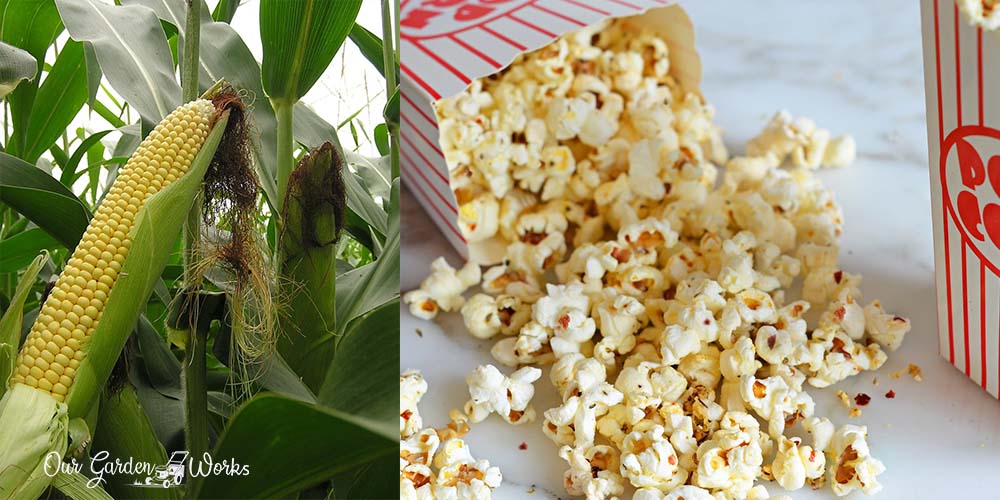Popcorn is a popular snack that is low in calories and a good alternative for other processed snacks. Be part of a sustainable community and learn how to grow popcorn in the comfort of your home. Popcorn is easy to grow and not too demanding, unlike other sensitive plants.
Let us introduce the parts of the popcorn and the right conditions where it will grow well. As long as you plant them in their desirable environment, you’ll be pooping your harvested popcorn in no time.
Let’s start!
Getting To Know Your Popcorn
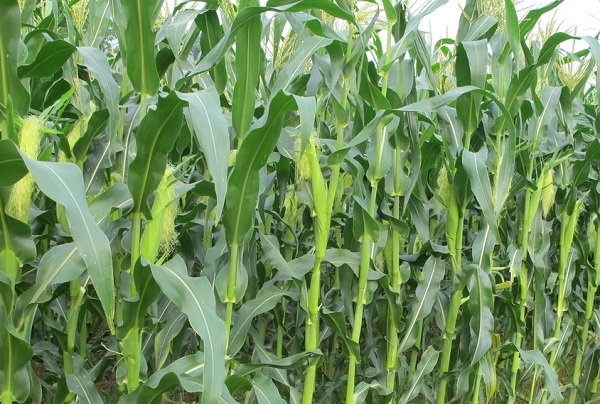
Popcorn or Zea mays everta is a type of corn kernel that pops or puffs up when heated. The kernel is covered with a hull that contains moisture. When heated the moisture turns into steam that puts pressure inside the kernel until it pops.
Flake is the term used to refer to a popped kernel. A collection of flakes is commonly referred to as popcorn while a single-piece unpopped flake is called a kernel. There are two types of flakes of popcorn namely, mushroom and butterfly or snowflake popcorn.
Mushroom popcorns are round and usually found in most packaged popcorns in supermarkets. They are less fragile, more tender, with little to no hulls.
Butterfly popcorns are the irregularly-shaped ones that you often get when you cook popcorn kernels at home. They expand in various directions which makes them crumb easier.
A single ear of corn can produce both mushroom and butterfly popcorns. Commercial producers of popcorn are selectively growing certain hybrids of popcorn if they want to achieve an all-mushroom popcorn harvest.
As a plant, popcorns are rich in vitamins. Without the added salt or butter, popcorns are a good source of:
- Manganese
- Phosphorus
- Zinc
- B vitamins and other minerals
- Thiamine (B1)
- Riboflavin (B2)
- Niacin (B3)
- Pantothenic acid (B5)
- Vitamin B6
- Calcium
- Copper
- Iron
- Potassium
- Selenium
- Sodium
Varieties of Popcorns You Can Grow At Home
If you have no idea of what type of popcorn to grow in your garden, here are some varieties to choose from:
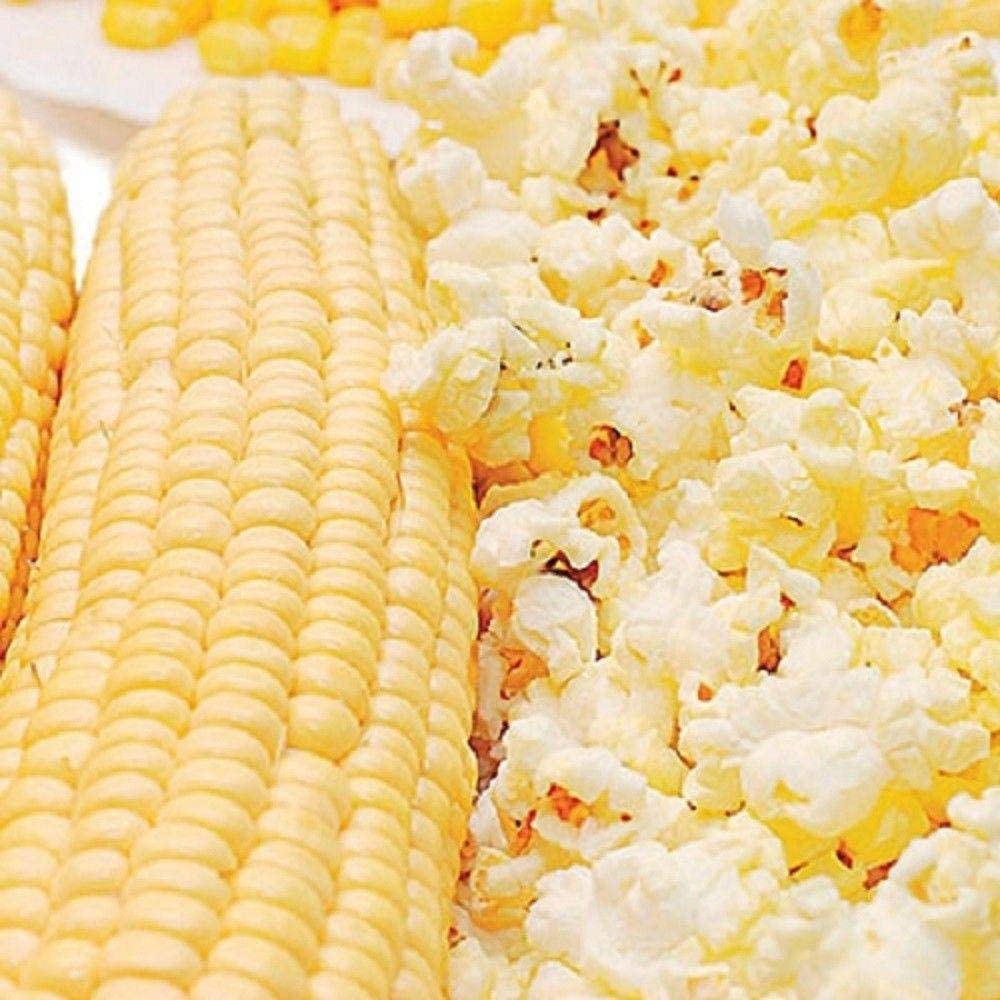
(1) Snow Puff: provides sweet and delicious popcorn and has one of the thinnest hulls. It can grow up to 7 feet tall and the ears can be 8 inches long.
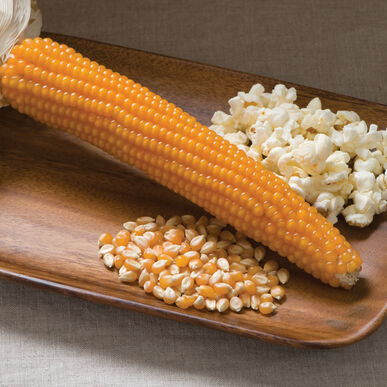
(2) Robust Yellow Hybrid: a Native American variety of corn that pops easily when heated. It produces long ears of corn and would take around 110 to 120 days from planting to harvest.
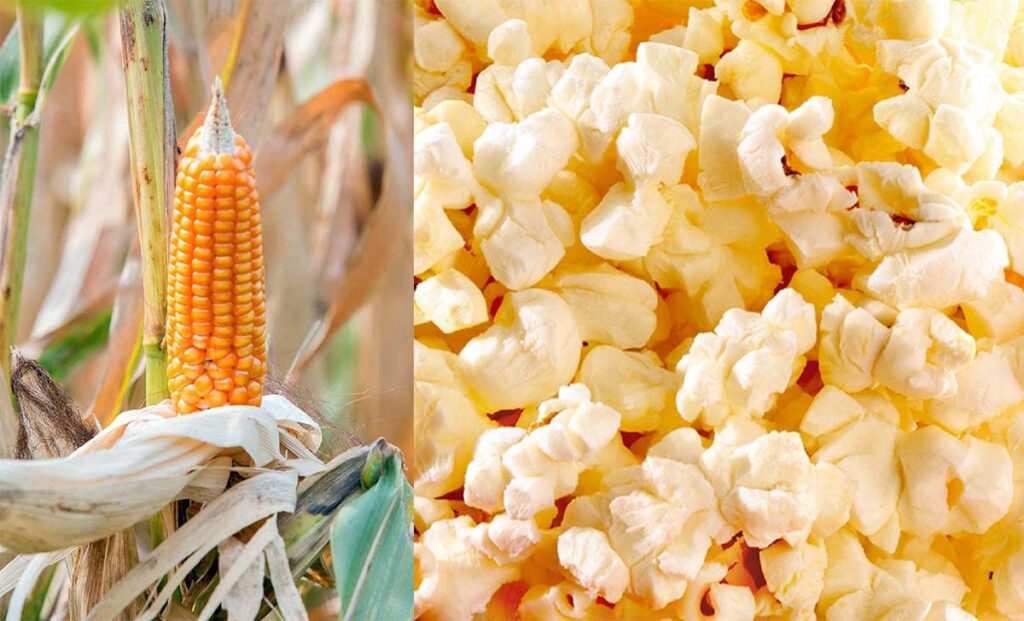
(3) Heirloom Popcorn: is an heirloom variety that matures faster (100 days) and produces about 7 to 8-inch ears.
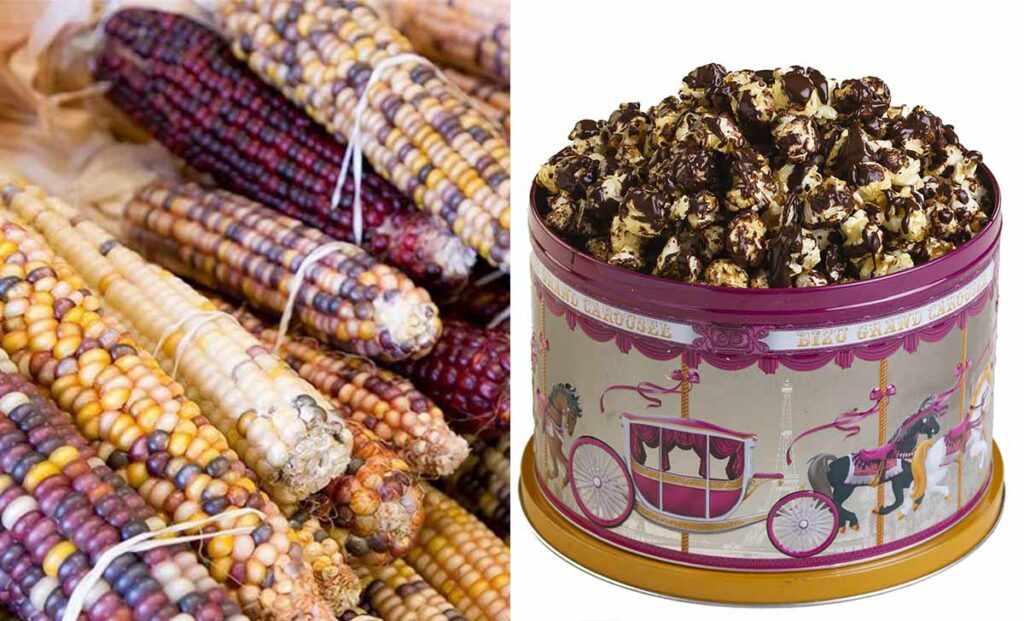
(4) Carousel Popcorn: Colorful variety of popcorn that produces small ears, reaching up to 5 to 6 inches. This variety can also be processed into cornmeal.
Growing Differences Between Regular Corn And A Popcorn
According to the University of Minnesota, the cross-pollination between popcorn varieties and sweet corn varieties should be separated during the growing season.
A popcorn cross-pollinated with sweet corn will fail to pop and while sweet corn will be hard and not provide a good eating experience.
Parts of a Popcorn Plant
For beginners in growing a popcorn plant, here’s a brief introduction to its parts. Recognizing the parts of a popcorn plant will allow you to search about them in case something happens to your popcorn during the growing season.
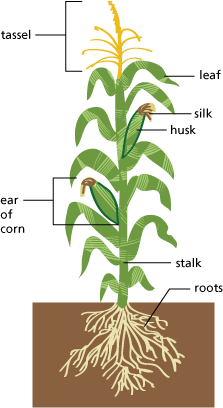
- Tassels: The part of the corn where pollination happens. It attracts bees and other pollinating insects. Think of it as the counterpart of flowers in your plants.
- Corn leaves: The leaves of popcorn are long and wide. When they are planted in rows, these leaves provide a canopy that prevents weeds from growing between the popcorn plants.
- Husk: The green leaves that cover and snuggle around the ear of corn to protect the kernels.
- Silk: The hair-like strands that run from the bottom of the ear to the top of the husks. It plays an essential role in pollination by serving as half stigma and half style.
- Ear: It is a part of the plant that contains the corncob, husk, and silk.
- Stalk: The stem of the whole popcorn plant that can grow up to 7 feet and strong enough to hold multiple ears.
- Roots: The part of the plant that keeps the popcorn plant in place and nourishes the plant.
Growing Requirements of a Popcorn
To help you grow your popcorn at home, here are the essential qualities that you need to prepare and observe throughout the growing season:
Soil Requirements
Popcorn grows well in nutrient-dense soil that has good drainage. Loam soil and sandy soil can both work for your popcorn plants.
You only need to adjust the depth of the seed depending on the type of soil that you have. You’ll also need to water sandy soil more often than compact loam soil.
The soil PH must be 5.8 to 7.0. Add aged-manure and compost to prepare the soil. Corn, generally, are heavy feeders so adding more nutrients to the soil will help all of the seeds germinate well.
You should also give space for the growth of your popcorn since the stalks can grow tall and wide. You should also plant your popcorn in rows to promote cross-pollination in the next few months.
The pollen is transmitted by the wind and insects from the tassels to the silks of the ears of corn. So placing the popcorn in rows 25 to 36 inches apart can help them pollinate faster.
Pro tip: The soil should also warm to 60 Fahrenheit before you plant the seeds.
Water Requirements
Corn loves very hot weather conditions which makes them prone to drought-stress. You need to water them about 24 to 36 inches of water per week or until the soil gets dark and fully drenched.
If you plant the popcorn in sandy soil, the water will drain faster so you have to double up your watering routine in such cases.
As soon as the ears mature, you can stop watering your popcorn and let them dry until they turn brown.
Pollination Requirements
Plant your popcorn in rows so they can naturally pollinate with each other as soon as the tassels develop and ears develop.
However, if you are planning on growing sweet corn together with popcorn, you must plant them 1 month apart to avoid cross-pollination and not spoil the quality of your popcorn.
If you can, better grow popcorns first before you grow your sweet corn to avoid problems with cross-pollination.
Fertilization
You can use organic fertilizers and sources of plant food like aged manure, grass clippings, and compost. However, make sure that grass clippings are not treated for weed control or herbicides.
A general fertilizer with a 10-10-10 NPK ratio would help boost the root and stem growth of your popcorn.
Pest control
Like other crops, popcorns are also an easy target for pests. The common pests in popcorn include:
- Corn earworm
- Corn borers
- Racoons
- Birds
- Squirrels
You can place a scarecrow in your garden to fend off birds. You should also clean the old stalks so pests like raccoons won’t visit your garden.
Pesticides with Bacillus Thuringiensis can help control corn earworms while permethrin and carbaryl are used for other insects.
Apply the pesticides as soon as your popcorns develop their silks. The application should be every 4 to 7 days, depending on the severity of the infestation.
How To Plant Popcorn At Home
If you got the space and the determination to grow your popcorn at home, here’s how:
Soil Preparation and Spacing
- Choose your desired variety of popcorn to grow in your garden. Soak them in water for 12 hours to moisten the seeds and promote better germination rate.
- Mark the area where you plan to plant your popcorn. It has to be an area where your popcorn will get full sunlight from sunrise till sundown. Each row should be 24 inches apart and seeds should be planted 8-10 inches apart.
- Prepare the soil by adding compost and aged manure and use the trowel to mix it with the soil.
Direct Seeding
- Using a stick, poke ½ inch holes into the soil in spring and 2 inches during summer. Be sure to place the holes 8-10 inches apart. If you are planting in a sandy soil, sow the seeds 2 inches deep into the soil, regardless of the season.
- Make sure to let the soil warm up for up to 55F to 60F. Otherwise, the seeds will not germinate well.They will also become rone plant diseases in cool soil.
- Place the seeds, cover it with soil and water them.
Germination
- Let the popcorn seeds germinate for 10 days. They are slow to germinate compared to other varieties of corn.
- To control and retain soil temperature, you can use plastic mulch or grass clippings that are not treated with herbicide.
- Once the stalks reach 4 feet or 10 inches, thin them by removing excess leaves at the bottom part of the stalk.
- Water them with 2 inches of water every week until they mature for about 90 to 120 days dispensing on the popcorn variety you chose.
- When the stalks are at your knee-level, mound the soil to the stalk to help support its weight.
Weed Control
- Weeds can be a problem during the popcorn’s first month. Removes the weeds as often as you can without damaging the roots of your popcorn.
- As the stalks get taller and leaves get wider, there will be a canopy that will starve the weed seeds from sunlight and prevent them from growing.
Fertilization and Pest Control
- Fertilize your popcorn in midsummer with nitrogen to boost their growth. A 10-10-10 fertilizer would be enough to support their growth.
- Scare away pests by placing a scarecrow or spraying a pesticide as soon as the silks start to develop. Once the pests get inside the ear, the only way is to handpick the larvae inside the husk.
Pro tip: The three numbers in fertilizers such as 10-10-10 refers to the nutrient ratio of the fertilizer. It stands for NPK or nitrogen, phosphorus, and potassium.
Harvesting
- Harvest the ears once the stalks dry up and turn brown.
- Remove the husks and place the corn cobs in a net. Hang them in a dry place where there’s good ventilation.
- Let it dry for a week or two. Test if the kernels are good to go by popping a few of them in a pan.
- Remove the kernels from the corncob and place them in airtight containers for storage.
Tips in Growing Popcorn At Home
Growing popcorn in your yard can be a challenge especially if it’s your first time. So, here are some tips for a successful and bountiful harvest:
- Always check on your popcorn as soon as the ears start to develop.
- Do not plant sweet corn varieties next to popcorns or you’ll end up with undesirable sweet corn or kernels that won’t pop.
- Allow the husks to turn brown before you harvest your popcorn..
- Harvest the ears before the first frost.
- If the popcorn seeds fail to germinate, you can try placing two seeds in one hole. Sometimes, there’s a 75% chance for a fertile popcorn seed to germinate.
- Place your popcorn in an area where there is a lot of sunlight.
Frequently Asked Questions (FAQs)
Will store-bought popcorn grow?
No. The kernels are not fertile enough to grow as a plant. They are also already processed and went under sterilization and treatments in food factories.
How long does it take to sprout popcorn?
It takes about 10 days for popcorn seeds to germinate and sprout. For a better germination rate, you can soak them for 12 hours before planting them in the ground.
When should you plant popcorn?
The best time to plant the popcorn seeds is when the threat of frost after winter is already gone or early spring. You should plant the seeds when the soil is warm enough.
Why isn't my homegrown popcorn popping?
Popcorn kernels that pop should have 14% moisture in them. So, if the seeds are not popping, they might have more moisture in them and need to dry more.
Final Thoughts
Learning how to grow popcorn at home is a great way to start growing your food. You’ll not only get an unlimited source of snacks but try to fall in love with growing your own vegetables.
We hope that this post has been helpful and gave you all the information you need in growing your popcorn.
Let us know in the comments about the progress of your popcorn and share some tips that made you enjoy a bountiful harvest.
